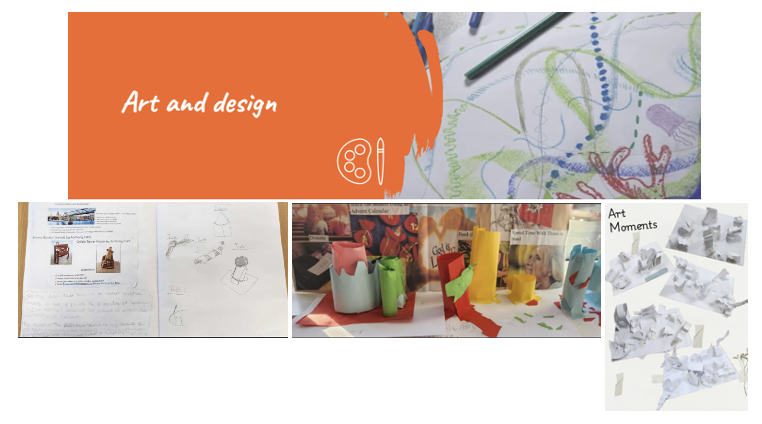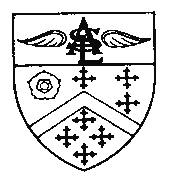Art & Design


Intent
The primary aim of the art curriculum based on the Kapow Primary scheme is to foster creativity, develop practical skills, and promote visual literacy across all primary year groups. It focuses on building technical skills, creativity, and critical thinking, ensuring that every child is equipped to express themselves artistically regardless of their starting point. The curriculum is designed with clear progression to ensure that children build upon previous learning, increasing in both complexity and skill throughout their primary years.
Key Intentions:
- Skill Progression: The curriculum scaffolds learning from Year 1 to Year 6, ensuring that children develop key artistic skills such as drawing, painting, sculpture, printmaking, and digital art in a structured and sequential manner.
- Building Creativity: Encouraging children to experiment with different media and techniques while developing their own artistic expression.
- Cultural Awareness: Providing exposure to art from different cultures and historical periods to broaden students’ understanding of the world.
- Differentiation and Accessibility: The curriculum is designed to be inclusive, offering support for all learners, regardless of their ability level. This includes scaffolding for children with special educational needs and more advanced challenges for children who need greater extension.
- Cross-curricular Links: Art is integrated with other areas of learning, such as history, geography, and science, to make learning more meaningful and connected to the wider curriculum.
- Inclusive Practices: Special attention is paid to ensuring students with SEN (Special Educational Needs) have the appropriate scaffolding in place, including differentiated instructions, simplified tasks, and additional time or assistance where necessary.
EYFS
Art lessons in Reception and Nursery are designed to be hands-on and full of exploration. Through the Kapow Primary scheme, we will introduce children to a variety of materials like paint, crayons, clay, fabric, and natural objects. Here’s what children will experience:
Drawing and Painting: Children will learn to use pencils, crayons, and brushes to experiment with different marks, shapes, and colours. They will develop control over their movements, improving their fine motor skills and hand-eye coordination.
- Sculpture: Working with clay and other malleable materials, children will practice shaping, rolling, and moulding to create 3D art. This helps with spatial awareness and encourages them to think about form and structure.
- Collage and Textures: Using scissors, glue, and various materials, children will create layered collages, learning about textures and composition. This promotes creativity and introduces them to the concept of mixing media in their artwork.
- Observational Drawing: Children will start to observe their surroundings more carefully—learning to draw simple shapes, objects, and even people, helping them understand the relationship between real-life objects and their representation in art.
Through these activities, children will develop key skills such as:
Fine motor control (cutting, drawing, colouring)
Hand-eye coordination
Creativity and imagination
Describing and explaining their artistic choices (building language skills)
Understanding and experimenting with different materials
Impact
The Kapow Primary Art scheme, with its structured and progressive approach, has a significant impact on students across primary year groups:
- Skill Development and Progression:
- By Year 1, students begin by exploring basic shapes, colours, and textures, learning how to express their ideas through simple drawings and paintings.
- By Year 2, children are more confident in using different tools and materials, experimenting with textures and introducing new techniques (e.g., observational drawing, colour mixing).
- In Year 3 and Year 4, students begin to refine their skills, using a wider range of media such as clay, pastels, and printmaking, while also developing their understanding of art history and artists.
- In Years 5 and 6, children start to master advanced techniques like portraiture, abstraction, and perspective, incorporating more complex concepts like scale, proportion, and composition into their work. They also begin to reflect critically on their own work and that of others.
- Creativity and Confidence: Through the consistent build-up of skills, children’s creativity blossoms, and they gain the confidence to experiment with new ideas and approaches. By the time students reach Year 6, they are capable of planning and executing their own projects, both individually and in collaboration with peers.
- Increased Cultural Understanding: Exposure to global art forms and different artists enriches students’ understanding of diverse cultures. Children are encouraged to think about how art reflects cultural values, societal issues, and history, fostering empathy and broadening their perspectives.
- Inclusivity and Accessibility: The curriculum’s careful scaffolding ensures that all children, regardless of ability, can access the content. Children with special educational needs or those requiring additional support are given the resources and adjustments necessary to participate fully in the curriculum. This includes the use of visual aids, step-by-step instructions, and differentiated tasks that match their learning needs.
- Well-being and Personal Expression: Art serves as a powerful vehicle for personal expression, offering children an opportunity to communicate their feelings and ideas in a non-verbal way. The gradual development of skills allows children to find their own voice and feel a sense of accomplishment in their creative journey. This contributes to positive emotional development and well-being.
EYFS
By the end of Reception and Nursery, children will have:
Developed fine motor skills through activities like drawing, painting, cutting, and sculpting.
Gained confidence in self-expression by using art as a way to share their thoughts, feelings, and ideas.
Built vocabulary to talk about their work, such as colour names, shapes, and textures.
Enhanced problem-solving skills, as they experiment with different materials and techniques to create the results they envision.
The impact will be seen in how children approach their artwork—no longer just focusing on the end result but enjoying the process of making and experimenting. They will show increased confidence in describing their work and the work of others.
Streamlining for Accessibility and Differentiation
The Kapow Primary scheme takes a systematic approach to ensuring that art education is accessible to all children:
- Adapted Learning Pathways: Tasks are designed to be adaptable to different ability levels. Some students may focus on developing simple techniques and processes, while other students are encouraged take on more complex challenges.
- Practical Support: Tools such as templates, scaffolding guides, and differentiated worksheets are available to support children who may find certain techniques or concepts challenging.
- Assessment for Progression: Teachers can assess progress through both formative (ongoing) and summative (end-of-unit) assessments. These assessments focus on the development of skills and the application of techniques, ensuring that children’s growth is recognized at each stage of their artistic journey.
Parental and Community Involvement: Opportunities for showcasing art projects and involving the community, whether through school exhibitions or local art collaborations, help build confidence and make the learning experience more impactful.
Useful website links
A website with fun activities and art plans for home and free time.
An interactive abstract digital medium to allow the children to create their own Pollock inspired ink art.
Create your own art; play and have fun with art or go on an art adventure.
https://www.natgeokids.com/uk/teacher-category/art/
A variety of art projects for primary age students.




